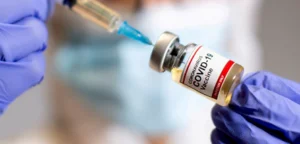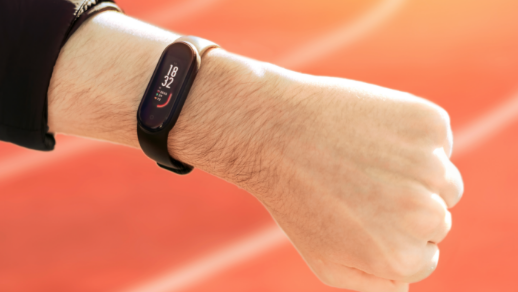by Shantanu Mukherjee and Anushka Iyer* on May 20, 2022
INTRODUCTION
The COVID-19 pandemic led to the evolution and adoption of technology at an unprecedented pace in the Lifesciences industry, to the point where much of what would have been considered science fiction a few years ago is now close to reality.
Consider how the following trends have irrevocably reshaped healthcare in fundamental ways, over only a few years: the collection, sharing and monetisation of data amid mounting privacy concerns in an increasingly connected world. The digitisation and automation of business processes. Artificial Intelligence and machine learning platforms that drive everything from drug discovery to product launches and business strategy. And the ubiquity of fitness wearables that effectively function as medical devices.
THE EVOLUTION OF WEARABLES
Fitness wearables have come a long way from the Manpo-Kei or “ten thousand steps” pedometer, which debuted in Tokyo in 1965 as a solution to the growing concern surrounding low levels of physical activity among the general population. Manpo-Kei was the first ever wearable health device, and the forefather of the personal fitness tracking or ‘bio-hacking’ industry. By 2021, the wearable technology market was worth USD 115.8 billion, and anticipated to exceed USD 380.5 billion by 2028, at a CAGR of approximately 18.5% between 2022 and 2028.
Technological advancements that have made such wearables more compact and efficient, coupled with an increased demand for remote monitoring and personalised care, and a pandemic-driven desire to lead healthier lives, have driven the explosive growth of the fitness wearable industry. The Indian wearable market shipped close to 14 million units in the first quarter of 2022 alone, which was 20% more than in all of 2021.[i] The number of connected smart wearable devices around the world has more than doubled from 325 million in 2016 to 722 million in 2019, and is estimated to cross 1 billion by the end of 2022.[ii] This is a significant increase for a category that did not effectively exist before 2009, when the first Fitbit entered the market.
A wristband, watch, ring or arm-patch, to track an ever-growing range of biomarkers, for every man, woman and child on the planet? It could be a reality within years, not decades.
CONSUMER WEARABLE OR MEDICAL DEVICE?
Most smart wearable devices today are designed and used to identify key biomarkers in the human body such as heart rate, body temperature, calorie intake, workouts, etc. which assist in monitoring or preventing diseases. For instance, the latest Apple watch sports an ECG function, and Apple intends to introduce blood oxygen sensors and temperature tracking, to help women track ovulation, in addition to other uses. Samsung, one of Apple’s competitors has also introduced an ECG function and blood pressure monitors in their latest smartwatch. In addition to heart rate, sleep, and oxygen levels, the newest generation Fitbit allows one to track and manage stress by calculating heart rate variability through different times of the day. Oura, a health-tech company, introduced a smart ring called the Oura Ring which not only tracks essential biomarkers such as temperature, heart rate, and sleep but also goes one step further to provide an in-depth analysis of one’s activity and health habits. There are also numerous startups (such as Supersapiens, Levels Health, etc.) that sell apps which can be synced with continuous blood glucose monitors directly, which allows for better management of blood sugar levels.
As smart wearables become more sophisticated, enabling them to monitor and analyse vital signs and pre-empt diseases, the line between a consumer and patient, and that of a smart wearable versus a medical device gets blurred giving rise to various challenges. For instance, GOQii, a company that sells smartwatches in India, helps track body temperature, heart rate, oxygen levels, and blood pressure among other biomarkers (similar to the Samsung, Fitbit, or the Apple watch) and unlike its counterparts, is registered as a medical device in India.
Unfortunately, the development of the law surrounding smart wearable devices has been rather relaxed in comparison to its technological counterpart. The biggest challenge this poses for both smart wearable manufacturers and legal regulators is to identify when a smart wearable crosses over to being considered a medical device.
In this series of pieces, we plan to examine how the US, EU, and India differentiate between medical devices and fitness wearables, if at all. Part I examines how smart wearables are regulated under United States federal law.
THE US FDA AND SMART WEARABLES
The Federal Food, Drug, and Cosmetic Act (FDCA) passed by the United States Congress in 1938, gave the Food and Drug Administration (FDA) the authority to regulate, enforce, and oversee the safety of food, drugs, medical devices, and cosmetics in the US.
The US FDA has been one of the first regulatory bodies to try and provide clear guidance on the difference between a smart wearable and a medical device. On 29-7-2016, the FDA issued a non-binding guidance document[iii] (FDA guidance) to clarify its position on wearables used for general wellness purposes, which it identifies as one that typically falls within the grey line between a medical device and a smart wearable.
As per the FDA guidance, the first step is to determine the intent of the use of the product i.e. whether the product is for general wellness purposes and the second, is to determine its risk level. The answer to both these questions determines the final nature of the device.
The FDA guidance defines a general wellness product as one that meets the following criteria:
(i) It is intended only for general wellness use; and
(ii) is of low risk to the safety of its users and other persons.
GENERAL WELLNESS PRODUCTS
According to the FDA, the intended use of a general wellness product can be determined by the following:
(i) It relates to maintaining or encouraging a general state of health or a healthy activity; or
(ii) it relates the role of a healthy lifestyle with helping to reduce the risk or impact of certain chronic diseases or conditions and where it is well understood and accepted that healthy lifestyle choices may play an important role in health outcomes for the disease or condition.
Section 520(o)(1)(B) of the FDCA excludes software intended solely for maintaining or encouraging a healthy lifestyle from the scope of a medical device. This also applies to the FDA guidance i.e. any software which is intended solely for maintaining or encouraging a healthy lifestyle and is of low risk will be considered a general wellness product.
The FDA has created two categories of intended uses to determine the nature of smart wearables. The first category is quite straightforward and entirely excludes products not intended for a specific health condition or disease i.e. one that promotes a generally healthy lifestyle focusing on sleep, weight, stress, physical fitness, mental acuity, self-esteem, etc. It also provides examples of uses that will not fall within this category and instead be regulated as medical devices:
(i) a product that claims to treat an eating disorder such as anorexia, or one that will treat or diagnose obesity;
(ii) a product that claims to treat an anxiety disorder; and
(iii) a product or a software game claiming to diagnose or treat autism, etc.
In comparison, the second category is more interpretative in nature and may be broken down further into sub-categories:
(i) a product that may help reduce the risk or impact of certain chronic diseases or conditions; or
(ii) a product that may help someone with a pre-existing disease or condition to live better.
The FDA guidance also provides examples of disease-related general wellness products:
(i) a product that provides breathing techniques and relaxation skills that may help with migraines or anxiety; and
(ii) a product that tracks and records one’s sleep, workout, weight, and diet to promote making healthy lifestyle choices which may help to live better with high blood pressure, diabetes, or anxiety.
Although prima facie, the above seems quite uncomplicated, it gets a bit murky when analysed alongside the definition of a medical device which, as defined by Section 201(h) of the US FDCA is as follows:
“An instrument, apparatus, implement, machine, contrivance, implant, in vitro reagent, or other similar or related article, including any component, part, or accessory, which is … intended for use in the diagnosis of disease or other conditions, or in the cure, mitigation, treatment, or prevention of disease, in man or other animals, or intended to affect the structure or any function of the body of man or other animals, and which does not achieve its primary intended purposes through chemical action within or on the body of man or other animals and which is not dependent upon being metabolised for the achievement of its primary intended purposes.”
A medical device, as per the FDA, is defined as one, among other things, intended for use in the mitigation or prevention of disease. On one hand, it may be argued that some general wellness products (including software) that reduce the risk or impact of a disease (like the second category discussed above) perform the role of mitigating or preventing disease and hence should be considered a medical device and therefore be subject to FDA regulations. On the other hand, the FDA maintains that it shall not regulate products that are solely intended to benefit one’s overall health and wellness as medical devices as long as they do not intend to prevent, treat, mitigate, or cure a disease or condition, but rather sustains or offers to improve general health including living better with a pre-existing condition.
LOW RISK
The FDA guidance only applies to products that are of low risk to its users. To determine whether a product fits into this criterion, the FDA recommends a simple three-question test. If the answers to any of its questions are positive, then the product may not be low risk.
(i) Is the product invasive?
Anything that penetrates or pierces the skin or mucous membranes of the body is considered to be invasive under the FDA guidance and automatically will be outside its scope.
(ii) Is the product implantable?
(iii) Does the product involve an intervention or technology that may pose a risk to the safety of its users and other persons if specific regulatory controls are not applied, such as risks from lasers or radiation exposure?
For this, the FDA recommends considering whether the Center for Devices and Radiological Health (CDRH) regulates products of the same type as the product in question and gives the following examples of products that would not be considered low risk:
(i) Sunlamp products that are used for tanning purposes, due to the risk of ultraviolet radiation, including an increased risk of skin cancer to its users.
(ii) A product that enhances athletic performance by providing suggestions based on results of lactic acid testing for which blood samples need to be obtained. This product requires an invasive intervention which poses a risk to its users.
Thus, according to the guidance, a general wellness product may nevertheless be subject to medical device regulation if it is invasive, implanted, or contains “an intervention or technology that may represent a danger to the safety of users”. Section VI of the FDA guidance also provides a decision flowchart to help determine the risk level of a particular product in order to determine its nature.
INTENDED USE VERSUS FUNCTION
From the above, it is clear that the FDA intends to simplify the approval process for general wellness products by not regulating smart wearable technology which is low risk and used for general wellness purposes thereby allowing more businesses to enter the digital health market. This encourages wearable device manufacturers to either self-regulate or adhere to the standards set for medical devices. One could also argue that what would otherwise be a medical device, could possibly be taken off the medical device regulation scanner if the claims surrounding such a device are modified to comply with general wellness use. However, in such matters, the FDA encourages manufacturers to obtain FDA approval before market entry of such products. For example, in 2018, Apple introduced an electrocardiogram (ECG) feature on its flagship Apple watch. This was in addition to its general health and lifestyle features such as tracking low range cardio fitness, calculating walking speed, steps, sleep, and other daily activity. The ECG feature was capable of detecting and informing its user of irregular heart rhythms or determining potential indicators of atrial fibrillation. Although it could be argued that Apple intended the watch to be used for general wellness products, since its function fell well within the definition of a medical device, Apple had to obtain an over-the-counter FDA Class II approval.[iv]
Therefore, although the FDA guidance sets out clear standards to determine whether a smart wearable will be regulated as a general wellness product, it also makes it that this is as much a product of its functionality as its intended use.
In Part II of our series, we will explore how fitness wearables are regulated in the European Union.
A version of this article appeared in https://www.scconline.com/blog/post/2022/05/20/is-your-watch-fda-approved-fitness-wearables-and-the-law/.
[i] India Wearables Market Records Double-digit Growth in 1Q22, Shipping 13.9 Million Units, says IDC India, IDC Media Center, 16-5-2022, see here. * Anushka Iyer, Associate, Ronin Legal.
[ii] Federica Laricchia, Connected Wearable Devices Worldwide 2016-2022, Statista, 14-2-2022, See here .
[iii] General Wellness: Policy for Low Risk Devices, US Food and Drug Administration, See here .
[iv] Application documents for the ECG software by Apple, See here .















